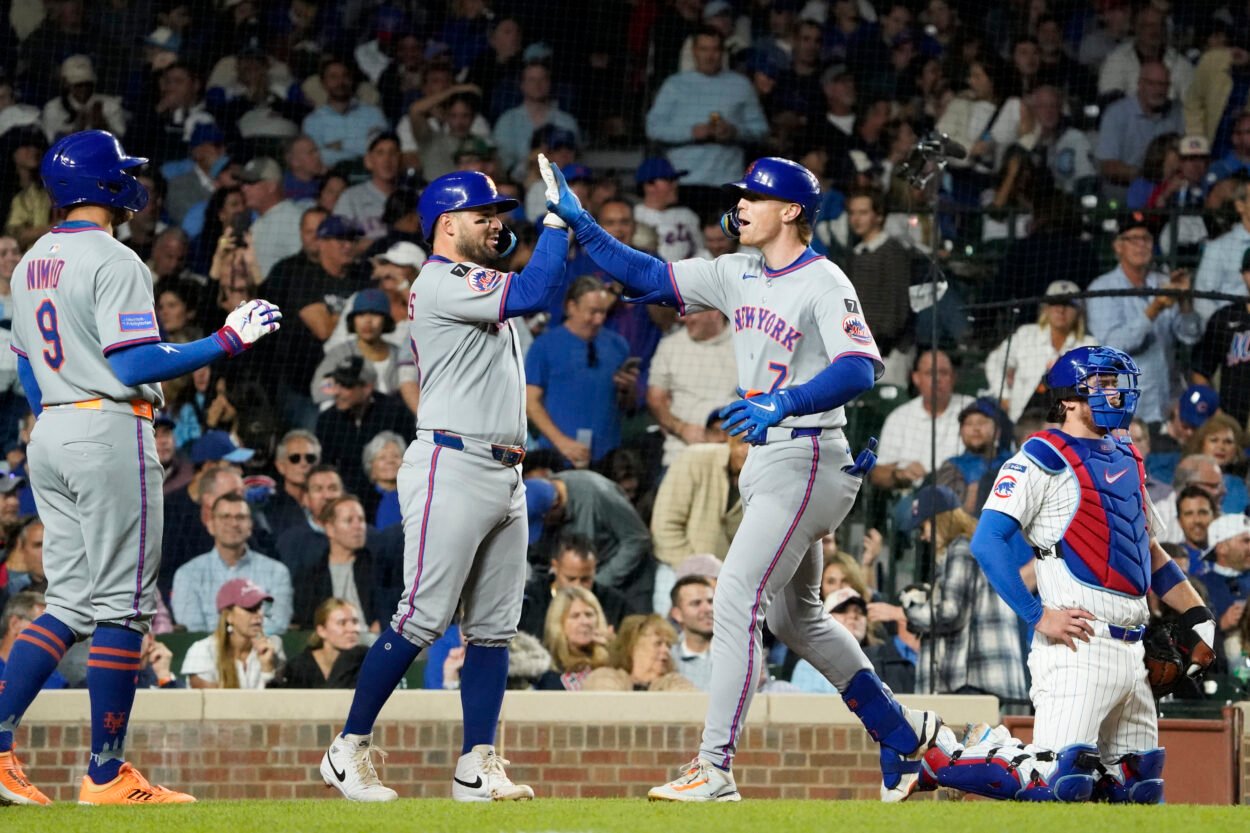
The New York Mets are preparing for a busy offseason filled with questions about their pitching staff, but one area they can finally feel confident about is third base. After years of uncertainty and inconsistent production at the position, Brett Baty’s 2025 campaign offered the kind of progress the front office has been hoping to see. At just 25 years old, Baty looks ready to cement himself as a long-term piece of the Mets’ infield core.
This past season, Baty played 130 games and slashed .254/.313/.435 with 18 home runs, good for a 111 wRC+. That level of production put him above league average offensively and showed clear growth from his earlier struggles. He was more consistent with his timing, drove the ball with authority, and started to show the kind of approach that made him a top prospect in the first place.
The Mets had flirted with the idea of moving on from him in trade talks last winter, but 2025’s performance has changed that outlook completely.

A balanced game built on both sides of the ball
What makes Baty’s season especially promising is that his defense finally caught up with his bat. Across 573 innings at third base, he posted four defensive runs saved and two outs above average — metrics that back up the eye test of a player growing more confident with his glove. His .968 fielding percentage further solidified that progress, proving he can handle the demands of the hot corner on a daily basis.
Baty’s combination of steady defense and left-handed power gives the Mets exactly what they’ve lacked in recent years: a reliable, controllable everyday third baseman. His contract situation also plays in New York’s favor. Under team control through 2030, Baty offers both stability and cost efficiency at a position that’s notoriously hard to fill. For a franchise looking to spend big on pitching, having a young, inexpensive cornerstone in the infield gives the front office much-needed flexibility.
The next step in Baty’s development
While 2025 was a major step forward, there’s still another level Baty can reach. His hard-hit metrics were strong, but there’s room to improve his consistency regarding contact. If he can bring down his whiff rate, his contact rates should skyrocket.
Baty’s emergence also changes the dynamic for the Mets’ offseason planning. Instead of worrying about third base, they can turn their full attention to rebuilding the pitching staff. With young arms still developing and the need for at least two reliable starters, the front office can focus its financial resources where they’re needed most.
A long-term building block for the Mets
The Mets have spent years searching for a homegrown position player who could lock down a spot in their everyday lineup. In Brett Baty, they finally have one. His progress at the plate, improved glove work, and steady demeanor have made him a foundational piece moving forward.
If 2025 was the year Baty proved he belongs, 2026 will be the year he defines his ceiling. For a Mets team trying to balance payroll flexibility with long-term growth, that’s the kind of stability that can quietly shape the future of the franchise.
